The elevation of Rim Village is 7100 ft (2165 m) above sea level. Upon arrival, take time to acclimate to avoid, headaches, dizziness, and fainting. Not only is the rim at a high elevation, the air is dry, and it is often windy. These are conditions which can lead to dehydration. Water is not readily available around Rim Drive. Carry with you more water than you normally drink.
Traffic Safety
Park roads include, Hwy 62 between the West and South Entrances, the seven miles from Hwy 62 to Rim Village known as Munson Valley Road, the 32-mile Rim Drive (East and West Rim Drives combined) which circumnavigates the caldera, Pinnacles Road from East Rim Drive, and the North Entrance Road from Hwy 138.
- All park roads have speed limits between 35 and 45 with slow traffic areas at 20 mph. In addition to endangering the lives of others, speeding kills bears, marmots, owls & other wildlife!
- Use turnouts to pull completely out of the road to take photos, consult the park map, or enjoy the scenery. It is also the safest way to permit another vehicle to pass.
- Parking a motor vehicle off a paved surface unless otherwise designated is prohibited. Same goes for driving onto pumice meadows or grasslands.
- See Scenic Rim Drive for information on parking, towing, and unhitching large vehicles before driving around the rim.
- Stay alive, don't drink and drive. Laws against alcohol and drug related driving offenses are enforced. Marijuana is legal in Oregon State but not in Crater Lake National Park which is under federal jurisdiction.
- Use tire chains or traction tires when posted as being required (during snowy or icy periods).

Winter Driving Safety
Park roads can be snow-packed and icy this time of year. Before leaving home, read our tips for safe travel and watch a short safety video.
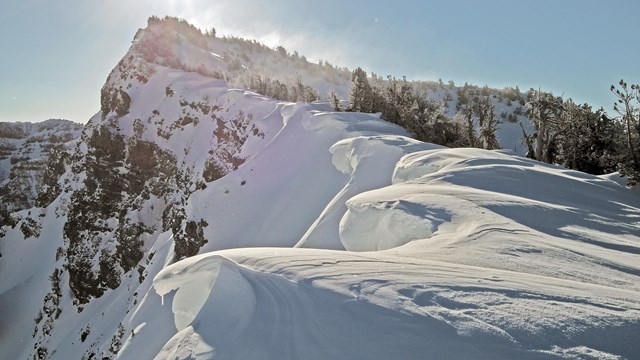
Beware of Snow Cornices!
Unstable ledges of snow extend beyond the rim of Crater Lake. Watch a short video to learn about them and other winter hazards.
Lake Safety
Swimming
There are no lifeguards on duty, ever. You enter the water at your own risk.
- Know your water skills before jumping in or swimming even a short distance.
- Be aware that the water temperature ranges between 38 and 62 degrees near the surface depending on the time of year and gets colder at at greater depths.
- Swimming is allowed within 100 yards of Cleetwood Cove and within 100 yards of Wizard Island, provided that swimmers remain at least 50 feet away from any boat, boat dock or buoy (see exception under §3.16 above).
- Swimming or wading within 50 feet of any boat, boat dock or buoy on Crater Lake is prohibited, except that swimming is allowed from the public boat dock on Wizard Island when not in use by park boats. Swimmers must immediately exit the water and clear the dock area whenever a boat is on approach to the dock, moored at the dock or departing from the dock. Swimming is not allowed from the National Park Service boat dock which is open to authorized personnel only.
- Swimming within fencing, buoys, lines (approx. 15 feet) of the bulkhead docking material is prohibited at all times.
The shore of Crater Lake is not a beach. It is piled with boulders which have eroded from the caldera. There is no defined path from the trail to the lake without stepping over or onto boulders.
Fishing
Crater Lake and all streams in the park are open for fishing except Sun Creek and Lost Creek. Note the safety items below and click fishing to review all the regulations.
- The Superintendent has designated the boat docks at Wizard Island as open to fishing when not in use by park boats. Fishing activities must cease whenever a boat is on approach to the dock, moored at the dock or departing from the dock.
- Fishing is prohibited from motor road bridges and all other public boat docks.
Caldera Safety
When Mount Mazama erupted it left a mile deep hole, technically called a caldera, inside the volcano which is now half filled with water. Areas within the Crater Lake caldera between the caldera rim edge and Crater Lake except the Cleetwood Cove Trail and areas on the shoreline extending 300 feet on either side of the Cleetwood dock facility are closed to public entry.
Why is it illegal to enter the caldera?
The inner walls of the caldera as well as some areas near the caldera rim consist of extremely steep, unstable rocks and soils. As part of the Crater Lake view shed, these natural features form part of a visual icon that symbolizes the park. Visitor use of the inner caldera walls would damage the highly sensitive geological resources, as well as damage and/or disturb plants and animals that live in this highly unique area. Hiking in the caldera would also expose visitors to the potential for serious accidents involving falls.
(See Superintendent's Compendium)
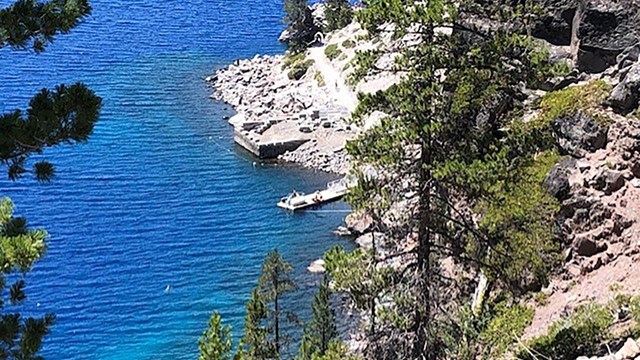
Cleetwood Cove Trail
Cleetwood Cove Trail is a steep and strenuous hike which drops 700 ft (213 m) of elevation in 1.1 miles (1.7 km). Know more before you go.
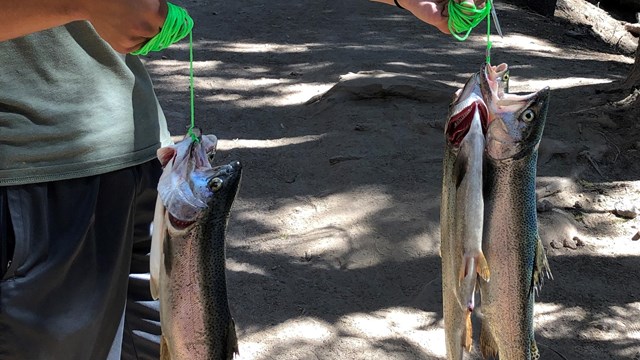
Catch of the Day
No fishing license is required within park boundaries, but here are important rules & regulations for fishing in the lake and park streams.

Learn About the Lake
How did Crater Lake form? How deep is it? What lives below the surface? What (and where) is the Old Man of the Lake?
Personal Safety
Hypothermia occurs when your body temperature is too cold. It happens during winter when visitors are improperly dressed, outside too long, or remain wet while still recreating. BUT it happens often during summer. Visitors jump in the lake which can be 38 to 62 degrees and then cannot warm themselves afterwards.
What should you do to avoid hypothermia?
- Dress in layers and keep dry, warm clothes nearby
- Move around when you feel cold so you can increase your body temperature
- Eat and drink warm foods and beverages
- Wear appropriate clothing outdoors, including hats, mittens, coats and footwear
- Take breaks by going inside to warm up
Hyperthermia occurs mostly in summer when the body overheats. Some common symptoms may include:
- dehydration, dizziness, nausea
- muscle cramps, blurred vision, fatigue
- increased breathing or heart rate
What should you do to avoid hypothermia?
- Avoid strenuous activity
- Consume water but also sports drinks to replenish and keep electrolytes stable
- Wear lightweight, loose-fitting and light-colored clothing if you’ll be out in the heat.
Weather Safety
Find forecasts, local weather stations, and a climate chart
Lightning
Summer thunderstorms (July through September) may be beautiful and exciting but they also bring risk.
- Before you travel or hike: Check the weather forecast at visitor centers, campgrounds, or the lodge. Arrange activities to minimize your exposure to lightning danger. This often means hiking early in the day.
- Listen for thunder, watch for lightning, and observe the direction of storm movement. Leave the lake immediately when lightning is visible or when thunder is heard.
- Lightning can reach more than 10 miles (16 km) from a cloud and far beyond where rain falls—you are still in a high danger zone even when it is not raining.
- If the sound of thunder follows a lightning flash in 30 seconds or less, seek shelter immediately.
Fire Safety
Backcountry
When you're in the forest, specifically the backcountry, it's hard to tell that there is a raging fire only a few miles away. You may not know the fire is headed your way or how fast the fire is moving and growing. Be aware of increasing smoke, its direction, and intensity. Talk with hikers approaching from the opposite direction about their experience with the smoke. Without cellular connectivity anywhere (which is the point of going out there, right?) sometimes you may have to make the decision to abandon your plans and exit the area as soon as possible. That may mean leaving in the same direction which you just came from.
Smoke
In summer and fall air quality may be adversely affected by smoke from local or regional wildfires. Smoke can seriously diminsh views of the lake and pose severe health concerns, especially for sensitive groups. Vist the park air quality webpage or go directly to airnow.gov for current air quality conditions.
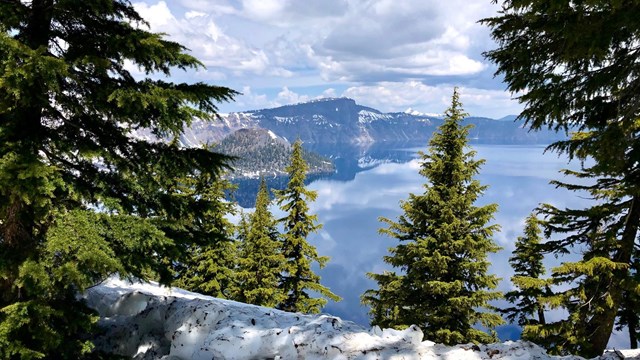
Weather
Regardless of the time of year or season that you visit, check the forecast multiple times in advance. Conditions can change quickly.
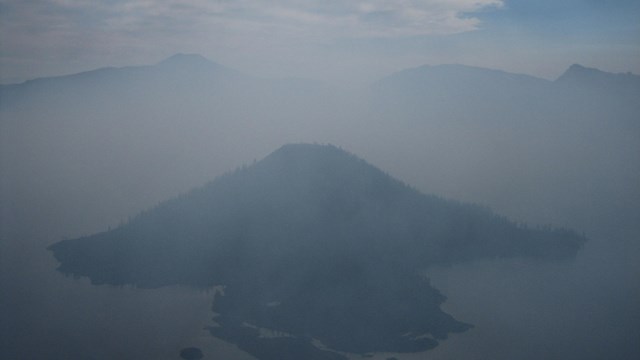
Air Quality
In summer and fall air quality can be adversely affected by smoke from local wildfires. Check the Air Quality Index (AQI) in the park.
Wildlife (and your) Safety
- They are adorable and know how to get what they want: YOUR FOOD. For your safety and their health, don't invite the birds to feed from your hand or encourage the ground squirrels and chipmunks to advance their unhealthy practise of begging. Keep all food securely stored and out of reach from wildlife.
- Speeding kills bears, marmots & other wildlife!
- Heed the warning signs. When a mountain lion is known to be active in a specific area, signs will be posted, and backcountry campsites and trails may close for personal safety and protection of wildlife habitat.
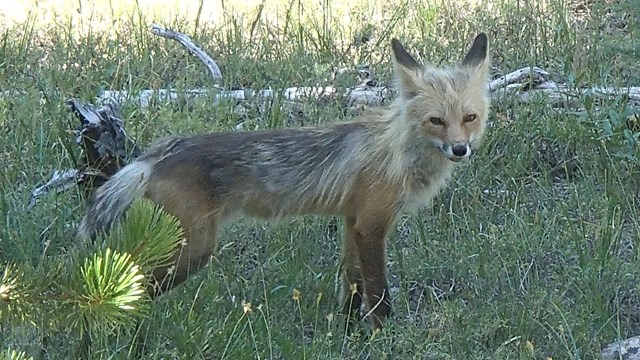
Animals
Mammals, birds, and insects make up the largest portion of animals living throughout the park but there also amphibians, reptiles, and fish.

Birds
Diverse habitats support migrating birds with varying layovers, and resident species that mate, nest, and raise young in the park.
|










